
Furnaces are nothing short of miraculous. Instead of sitting around a fire like generations past, furnaces are more powerful and can spread heat throughout larger areas to keep us toasty even in the coldest temperatures.
If you’ve ever wondered about how furnaces work or how to find out which is best for your home, we have the answers. In this article, we will give you information on the best brands, how to maintain your furnace, and the best furnace types available.
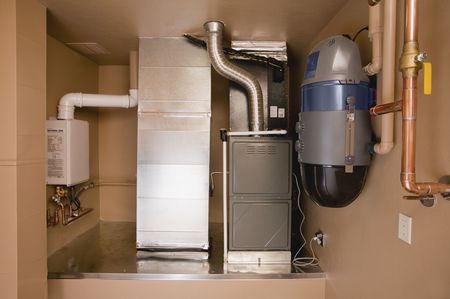
If you are looking for a specific section, use our table of contents to quickly get you to where you need to be.
Furnace Basics
Furnaces use a variety of methods to push warm air into a space to keep the occupants comfortable. Most of us wouldn’t know what to do without one. So, here’s a brief explanation of what a furnace is, how a furnace works, and how to choose one to get you started.
What is a Furnace?
A furnace is simply a unit that provides heat to a central heating system.
They are often referred to as heaters and boilers, as well.
The first actual central heating unit was made by the Romans, who used underground combustion linked by pipes and holes in the ground to provide heat to specific areas.
Furnaces are connected to ductwork so heat can be distributed throughout a space.
Although heat is produced in various manners, the result is a warmer, more comfortable space.
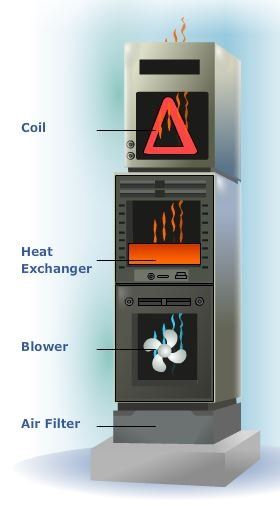
How Does a Furnace Work?
A central furnace works by producing heat inside a large unit and pumping that heat through attached ductwork. This is called a forced-air system, as air is forced throughout the ductwork to reach all connected areas.
But how exactly is the heat produced? This is tricky because there are many methods. Heat can be produced by fire, water, gas, air, electricity, the sun, and even by coal. Not all of these methods are common anymore, though.
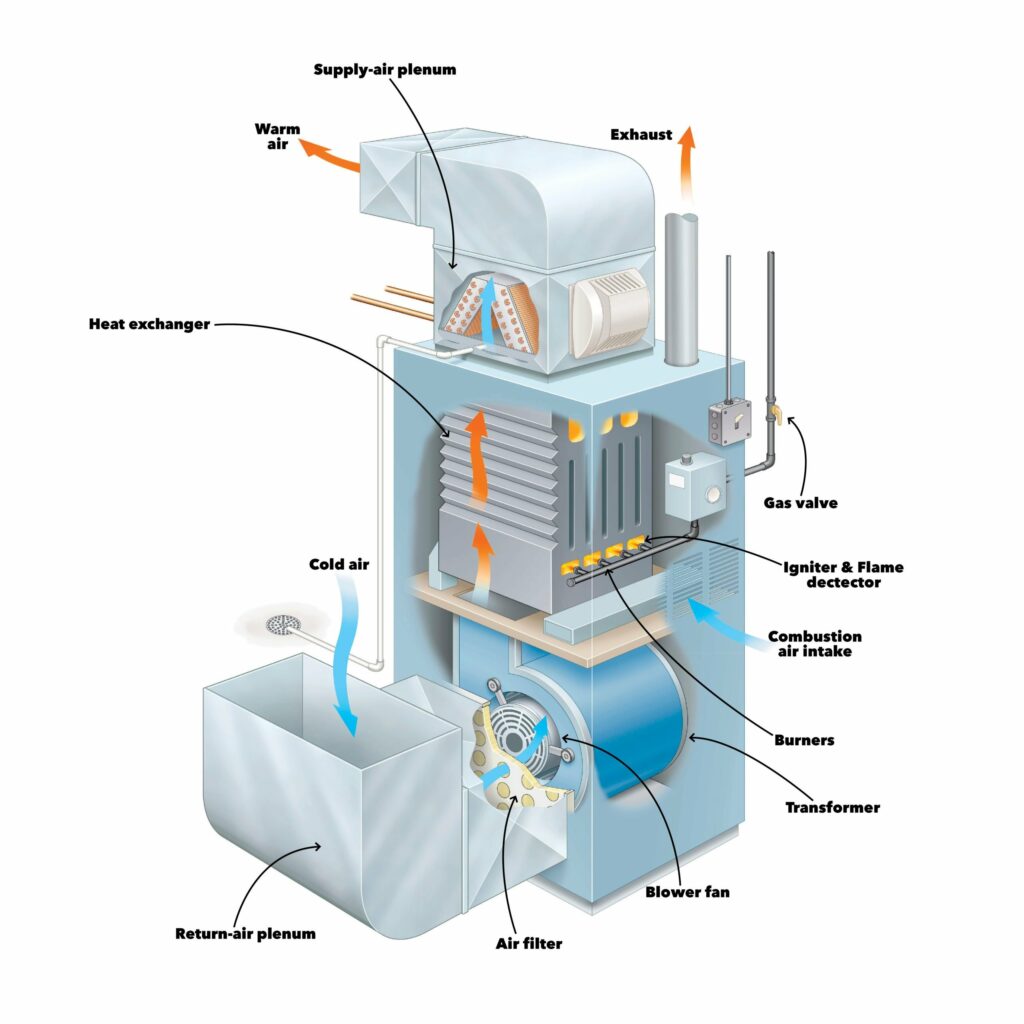
In an electric furnace, an electric current converts the electrical energy into heat. A fan inside the unit draws air in and heats the air as it passes through the coils.
Gas furnaces use propane or natural gas to produce heat. The gas is ignited by an igniter inside the unit. Air is then drawn in and is heated by the heat produced by the flame. Toxic fumes are vented to the outside, while the heated air is dispersed throughout your home.
Types of Furnaces
Furnaces are divided by the method they use to heat your home. Here are the most common furnace types.
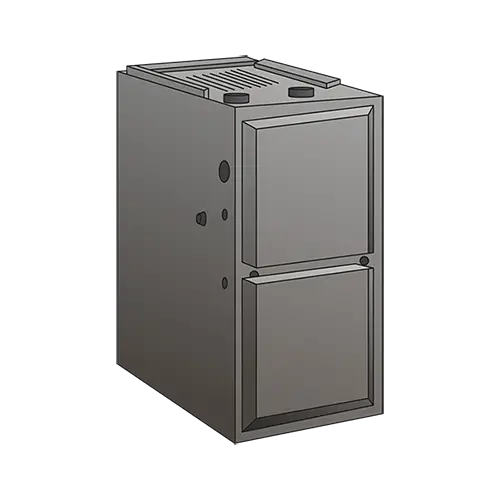
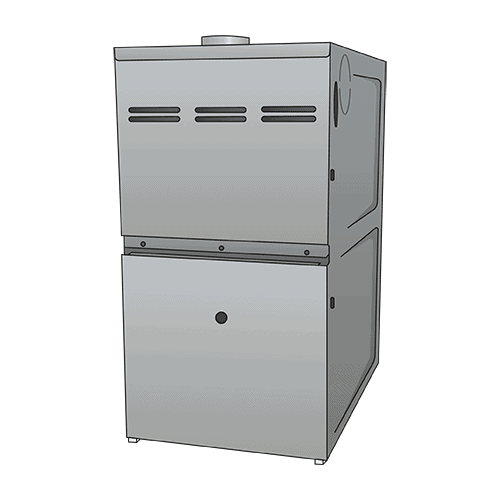
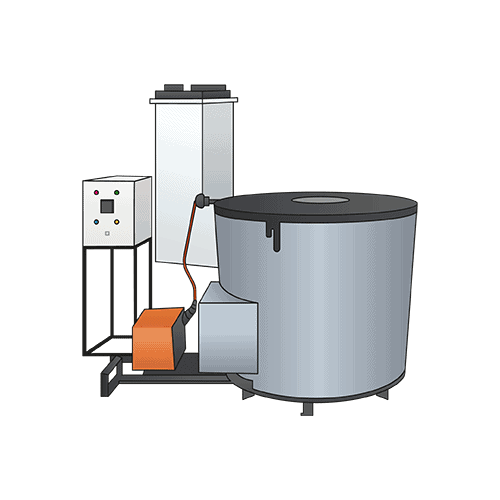
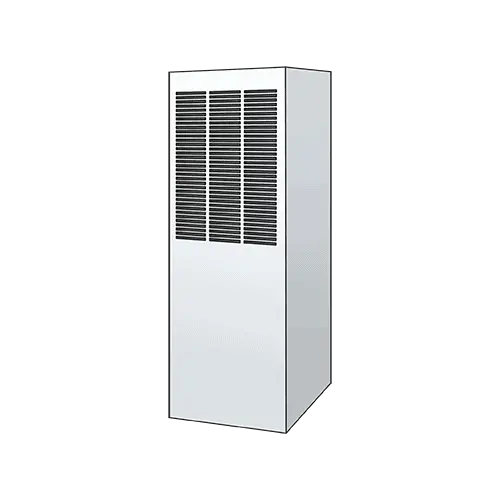
Gas/Propane
Gas furnaces use either natural gas or propane, which is ignited to produce heat. Using this type keeps your electricity bill lower but requires the purchase of propane tanks or a dedicated gas line to operate. Around half of U.S. households use a natural gas heater, while another 10% rely on propane.
Oil
Oil furnaces are less popular due to the rising cost of the oil needed to operate. These are used mostly in the northeastern portion of the United States. The upfront cost is less than others but they are less efficient, costing you more in the long run.
Electric
Electric furnaces are common, especially when gas is unavailable or cost prohibitive. Using electricity, a heating element is used to warm air and push it through vents. These are the easiest to install and last longer than other types.
There are other, less common methods of heating a home. Some units use heat from the ground (geothermal), water (heat pump/boilers), or the sun (solar heating) to warm an area. It is even possible to get a wood burning furnace for your home.
To further divide, furnaces also fall into two categories based on how they operate; single or two-stage. A single stage unit operates on full capacity at all times while a two-stage furnace can alternate between high or low power. Alternating power levels allow for a more efficient unit
Read Before Buying
With so many furnaces out there, it can be difficult to know what to look for. Here are some important things to keep in mind while shopping.
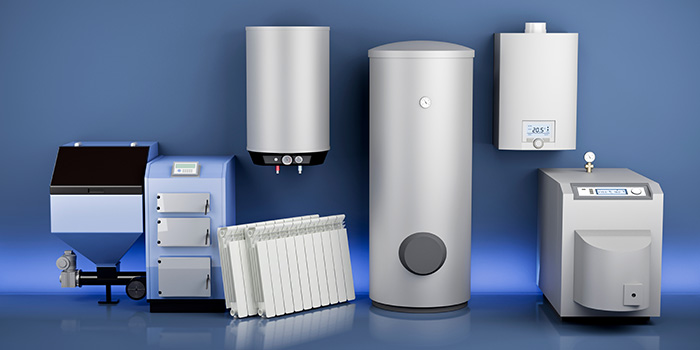
What Size of Furnace Do I Need?
Can any furnace be used in any space? Well, yes and no. Yes, it can be used but a wrongly sized unit will never be able to keep up with the demand. A too-large unit will consume more electricity and waste energy while a too-small unit won’t produce a sufficient amount of heat.
Here’s how to decide what size you need.
Furnaces are sized not according to their outward measurements, but rather the amount of BTU (British Thermal Units) they produce. This indicates the power output of a unit.
Calculating the amount of BTU you require can be complicated but we have attached a calculator to help you out. This calculation will take into account the square footage you intend to heat and the climate zone you live in.
Other factors you need to consider include ceiling height, amount of insulation, number of windows, and ductwork. These factors can increase the BTU rating you need.

How to Choose a Furnace
Once you determine the size you need, you’ll need to take a few more factors into consideration.
Budget
You need to decide how much you are able or willing to spend on a furnace. This will narrow your choices down. Be sure to factor in installation costs as well.
Type
Now that you have a budget, consider what type is suited to your home. If you do not have natural gas or propane running to your home, that type won’t work unless you’re willing to install gas lines too. Other types are less effective in certain regions. Some can be installed yourself (depending on your ability), while others require professional installation. This can greatly affect your budget.
Installation Cost
Depending on your level of expertise and the type of furnace, installation can be complicated. When working with sensitive electrical wiring, gas, or propane, there are many dangerous components that must be handled properly.
In most cases, this should be done by a licensed professional to ensure the most efficient, safe installation. Consider how much the cost of installation will add if self-installation is not possible.
Ratings
All furnaces come with energy efficiency ratings, notably HSPF and AFUE ratings. Take these into consideration when choosing a unit.

Popular Furnace Brands
Many brands make quality furnaces, however, some stand out over others. Here are some of the most reliable, popular furnace brands on the market. Click on the links below for more detailed brand reviews.

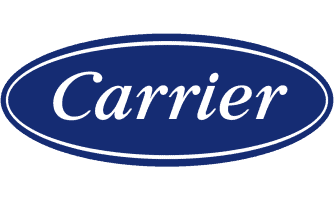
Furnace Maintenance Tips
To maximize the lifespan of a furnace, certain maintenance, issues, and troubleshooting is necessary. This includes regular cleaning, changing the furnace filter at least seasonally, and a yearly tune-up.
Common Furnace Issues
When your furnace isn’t operating properly, it can send you into a panic. Here are some common issues and causes.
My Furnace Is Not Producing Heat
When the weather is cold, a furnace that isn’t putting out warm air is concerning. Check the thermostat to be sure it is set to “heat” and that the temperature is at a warm enough setting. A clogged filter can also prevent warm air from passing into the ductwork. Lastly, if you have a gas heater, check the pilot light to be sure it is on.
Why Does My Furnace Keep Turning On and Off?
When a furnace stops and starts, it’s called short cycling and is caused by a lack of airflow through the unit. Check for a clogged filter or debris around the outside unit that is restricting airflow.
Why Is My Furnace Suddenly So Noisy?
If your furnace is pinging, rattling, or knocking, you should check this out. While some noises are associated with the influx of air and expansion of the ductwork, a sudden change in the normal sounds can indicate something is loose or damaged. Inspect ductwork and panels to see if a simple fix is available. Otherwise, you may need a professional inspection.
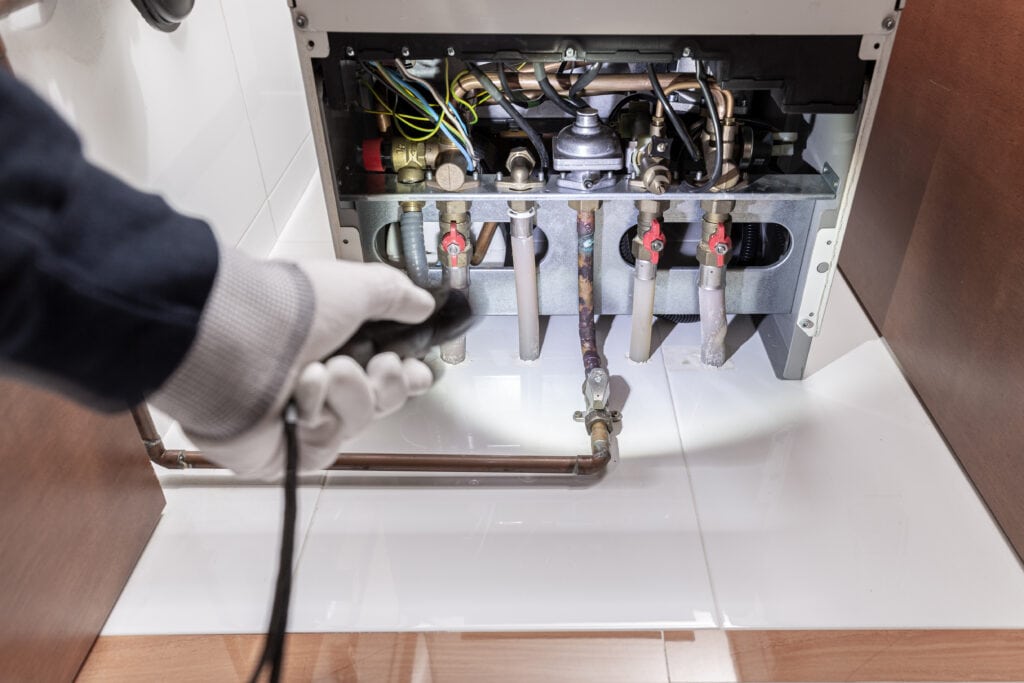
There’s No Air Coming Out Of My Vents
If you don’t feel any air coming from your furnace and have verified that it is on, your blower might be clogged or damaged. Check for clogs and call a repairman if your blower has a flashing red light.
Help, My Furnace Won’t Turn On
A furnace that won’t turn on is often due to a lack of electricity to the unit. Check the circuit breaker, reset switch, and gas lines to be sure it is getting the power and fuel it needs. Also be sure the thermostat is set to the right temp.
Furnace Troubleshooting
Calling out an HVAC technician to fix your furnace is something most people avoid whenever possible. If your furnace is acting funny, here are some things to try before making the call.
Verify It Has Power
Inspect the unit to make sure it is receiving power. Also check the circuit breaker to be sure it doesn’t need to be reset. See if your unit has a reset button that may also have been tripped.
Check/Change the Filter
A dirty or clogged filter can cause many issues with your furnace.
Check the Thermostat
Be sure the thermostat is in “heat” mode and the temperature is correctly set. Verify the ambient temperature to be sure it isn’t higher than the current setting.
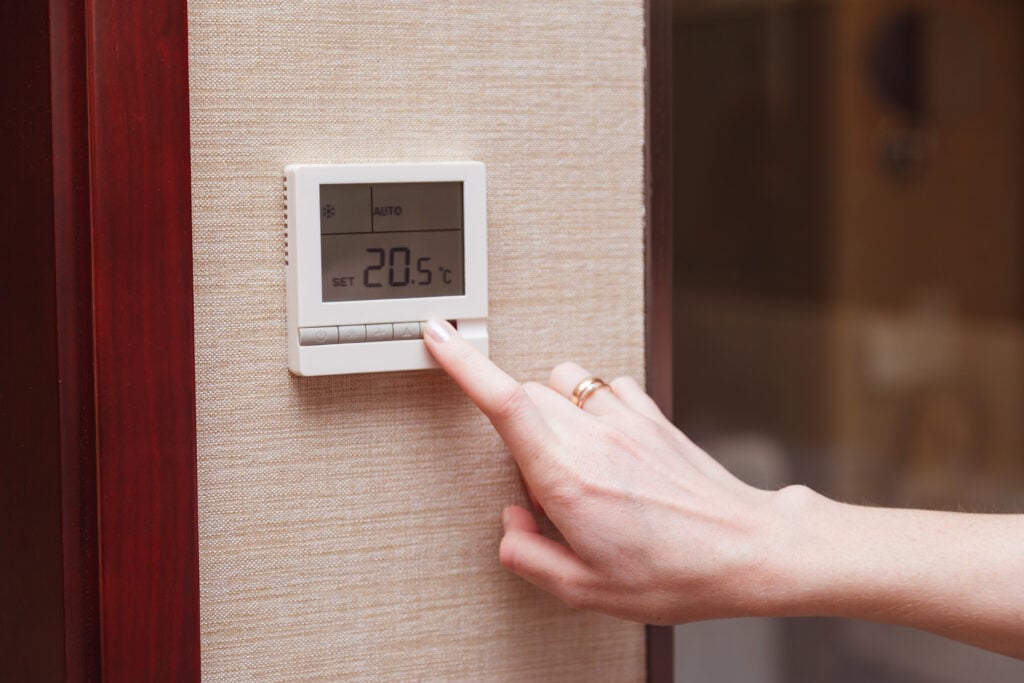
Is the Pilot Light On?
If you have a gas or propane furnace, verify that the pilot is lit. If not, there are steps you can take listed on your unit to restart. Before performing this, make sure there is no gas smell present.
Maintenance
Perform maintenance on your furnace. Remove any self-serviceable parts and wipe down or vacuum out any dust or dirt build-up. Inspect the furnace for any visible damage. Look for debris or clogs.
If none of the above tips solve your problem, it is advised to call out a professional. Furnaces have many parts that can only be accessed by someone with the proper training and tools. Attempting to repair a furnace without the necessary knowledge can result in permanent damage to the unit, yourself, or your home.
How to Install a Furnace
Installing a furnace is always best done by a professional, however, if you believe you have the necessary skill set and have decided to do this yourself, here are the steps:
- First, read the manual that came with your furnace. This may include tips, tricks, and specialized instructions for installation.
- Next, you will need to determine placement and be sure your ducting is sufficient for your new unit. If installing a more efficient furnace, a condensate line may be necessary, so figure out where this will run.
- Connect the unit to the existing ductwork and vent pipes.
- Connect the gas line if installing a gas furnace. Use caution and verify a proper connection and check for leaks.
- Connect the electrical wiring. Be sure to consult your manual to ensure proper connections.
- Now, attach the condensate line and run to the drain as determined in step two.
- Lastly, turn on the furnace. Check all connections and be sure there are no leaks.
That’s all there is to it. If you encounter any issues with installation, consult your manual or call out a professional to take over.
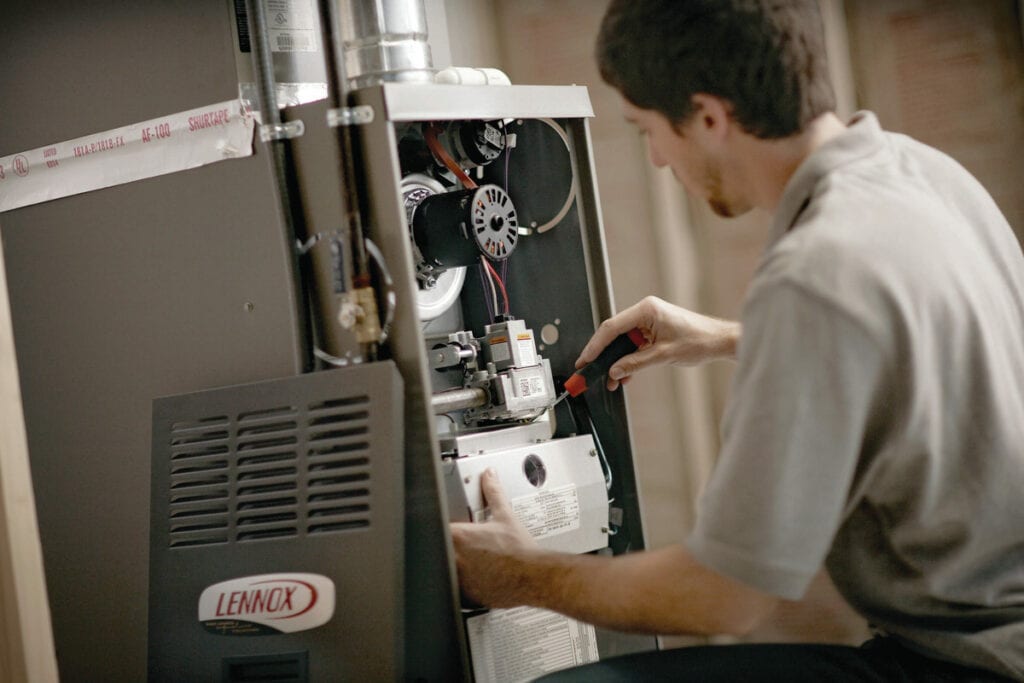
How to Clean a Furnace
Furnaces should be cleaned regularly to ensure optimal usage. Here is a step by step guide of how to perform a self-cleaning on a forced air furnace.
- First, turn off the electricity to your furnace (via a switch located near the unit) and completely turn off the gas (if applicable).
- Remove the side door, this should open into the wiring and components.
- Check the blower for oil ports and oil if needed – this should be done annually.
- Remove the burner cover and look for any issues such as dust/dirt/rust etc.
- Use a vacuum to clean out any dirt, dust, and cobwebs that are visible. Clean all accessible areas being careful not to disconnect any wiring.
- Look for anything that looks loose or out of place – for any significant issues, you should call a repairman.
- Reattach all doors and turn on the gas and electricity.
Your unit is now ready for the season. Check out the YouTube video below for a visual guide.
How Often Should I Clean a Furnace?
Your furnace needs to be cleaned at least once per year although the blower runs year round if you have central air. If your blower will run all year, it is a good idea to do it twice per year.
Your filter should be changed quarterly depending on your usage. When used in very dusty areas or when in constant use, it is a good idea to check it more often. This will prevent unexpected issues.
When is it Time to Replace My Furnace?
We like to get the most for our money, which means many times, we hold off replacing a high-cost item, like a furnace until it is unavoidable.
When do you know that time has come?

Age of Your Furnace
Furnaces generally last around 15-20 years. If you are more than ¾ of the way through this lifespan, and begin experiencing problems, it’s time to consider replacement.
A Major Repair is Looming
Furnace repairs can be costly and sometimes, in an older furnace, it is better to replace than repair. Weigh the cost of both to help you determine which is the better option.
Rising Electric Bills
If your electric bill shoots through the roof each winter, you likely need a more efficient unit. Either your unit is inefficient or your space is too large for your furnace to keep up.
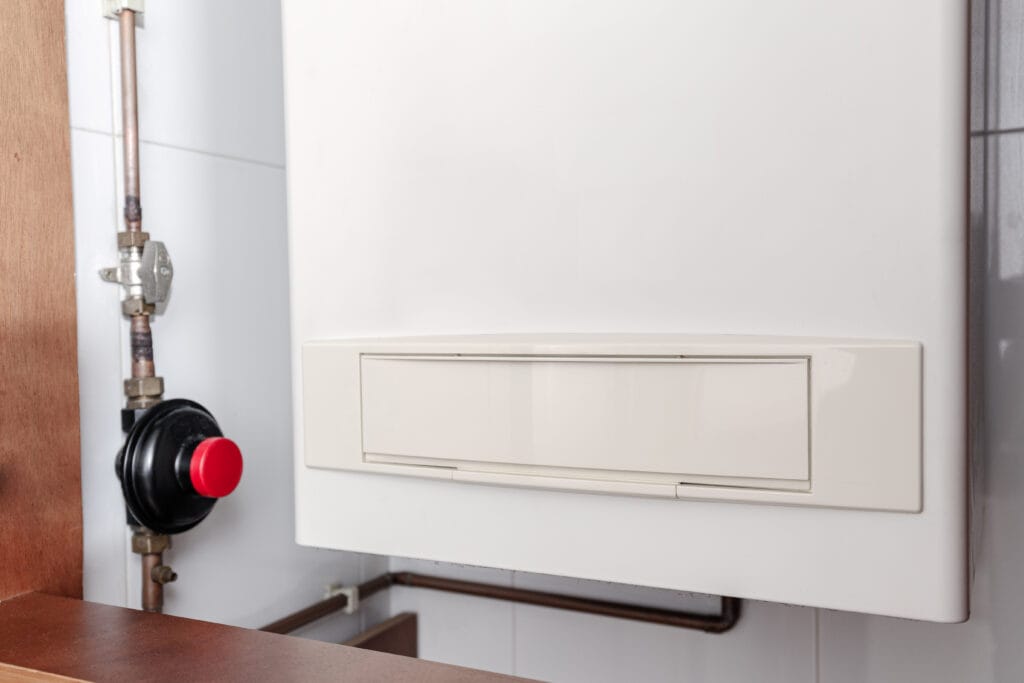
Frequent Minor Repairs
Every time you clean or have someone out to look at your furnace, they have to replace a part or two. The individual costs may seem low but consider the number of repairs being done yearly. The unit may be failing and your money is better spent on a new model.
Intermittently Operating
If you are having trouble keeping your house at a steady temperature or have to continuously reset the breaker or light the flame, this may be a sign it’s time to get a new furnace.
Getting a new furnace is rarely something people look forward to but often, a new unit will operate more efficiently and put your mind at ease.
Can You Really Find a Quality Furnace That’s Affordable?
Finding an affordable furnace is possible. In order to achieve this, you have to determine your needs and your budget. Also, you’ll need to consider whether you can install or will need a professional installation.
Choosing a unit that fits your needs will help keep the cost manageable. More BTU is not always better, so like Goldilocks, find one that is “just right” and you’ll be happy with your new furnace. Getting the perfect unit at the right price will take the sting out of furnace shopping.
Conclusion
A furnace is essential to heating your home whether you live in a mobile home or a multi-family residence. Now that you are armed with all the necessary information, you are ready to take control of your furnace and keep it working for as long as possible. And when it’s time to replace, you’ll be ready for that too.
Thanks for stopping by!

HVAC Training 101 is a participant in the Amazon Services LLC Associates Program, an affiliate advertising program designed to provide a means for us to earn fees by linking to Amazon.com and affiliated sites. Pages on this site may include affiliate links to Amazon and its affiliate sites on which the owner of this website will make a referral commission

